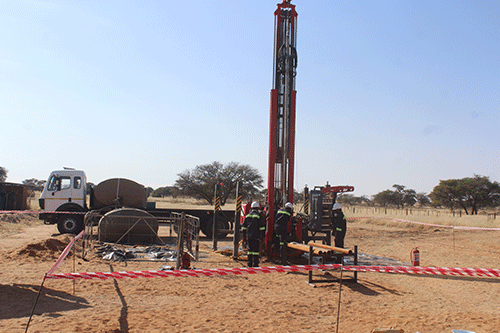Edgar Brandt
Finance minister Iipumbu Shiimi said uranium miners in Namibia are waiting for prices to recover to revive projects suspended when prices reached unsustainably low levels. Since 2012 and through much of 2021, uranium prices traded under the key US$50 a pound level, falling as low as US$18.
However, in September last year, the spot price for uranium shot up to a nine year high of over US$50 a pound.
Namibia is Africa’s biggest uranium producer, which is needed for nuclear power in a world shifting away from fossil fuels.
To support a resurgence in uranium mining, Namibia is planning a second desalination plant to supply mines in the uranium-rich Erongo region.
This, according to Shiimi, is in anticipation of higher uranium prices attracting investors.
Speaking to Bloomberg News on Thursday last week at the World Economic Forum, Shiimi said: “There are a number of uranium projects in the pipeline just waiting for the price to recover. If the price reaches US$65 to US$70 a pound, then that will trigger more investment in uranium”.
A revival in nuclear power demand was triggered since Russia’s invasion of Ukraine as nations scramble to reduce their dependence on fossil fuels.
This spurred a rally in uranium prices, which more than tripled to US$63.75 a pound in April from a historic low in 2016. Uranium prices, which touched a record in 2007, have been languishing for almost a decade. Uranium prices shot up in 2007 from US$72 per pound at the start of that year to an all-time high of US$136.22. However, in the years since then, the spot price for uranium has mainly tracked downward on a steady slope.
Industry experts explained that uranium prices are mainly influenced by aboveground mine supply – and of course overall demand for nuclear energy. Analysts with a bullish outlook believe the uranium market cycle has reached its bottom, and that a break to the upside for uranium prices is supported by positive supply and demand fundamentals.
On the demand side, nuclear energy generated from 445 reactors around the globe supplies about 10% of the world’s energy requirements.
China, alone, is constructing 16 new reactors; Russia is constructing three, with another 11 planned – and India has seven nuclear reactors under construction.
However, the IMF’s latest World Economic Outlook 2022, published in April 2022, warns China’s economic slowdown could set back the economic recovery in emerging markets and developing countries, especially commodity exporters such as Namibia.
According to Trading Economics, which provides historical data on economic indicators for over 200 different countries, recession fears and higher interest rate worries could dampen the demand for energy, which also pressured uranium prices downwards.
Exacerbated by Chinese growth concerns, uranium prices sharply declined from their 11-year highs in late April.
“Still, further decreases were prevented by lingering concerns of sanctions against Russian nuclear fuels, which led power plant operators to scrap for contracts with Western uranium converters and enrichers – well above their current capacity,” stated Trading Economics.
Uranium prices, unfortunately, fell to three-month lows of around US$47 per pound in May, mainly due to heightened volatility in financial and energy markets-led utilities to secure supplies in the long-term delivery space.
Meanwhile, Bloomberg reported the UK plans to triple its installed nuclear power capacity by 2050, and Belgium is negotiating to keep two reactors open.
Also, South Korean President Yoon Suk Yeol plans to make nuclear energy central to his nation’s climate goals while California, the birthplace of the US anti-nuclear movement, is reconsidering plans to close its only remaining set of reactors.
“The rising price of uranium has incentivised uranium miners to ramp up exploration and production,” John Ciampaglia, CEO of Sprott Asset Management, which launched the world’s first uranium physical trust last year, said in a presentation dated May 17.
“World-wide, 57 new nuclear plants are under construction and 97 are planned, but current uranium production is failing to meet demand.”
For now, only two of Namibia’s three mines are producing nuclear fuel: Rossing Uranium Mine and Husab Uranium, which are controlled by Chinese investors.
Australia’s Paladin Energy Ltd. plans to resume commercial production at its Langer Heinrich mine by 2024.
In addition, there are five mining areas under exploration in the country, according to the Namibian Uranium Association.
– ebrandt@nepc.com.na


